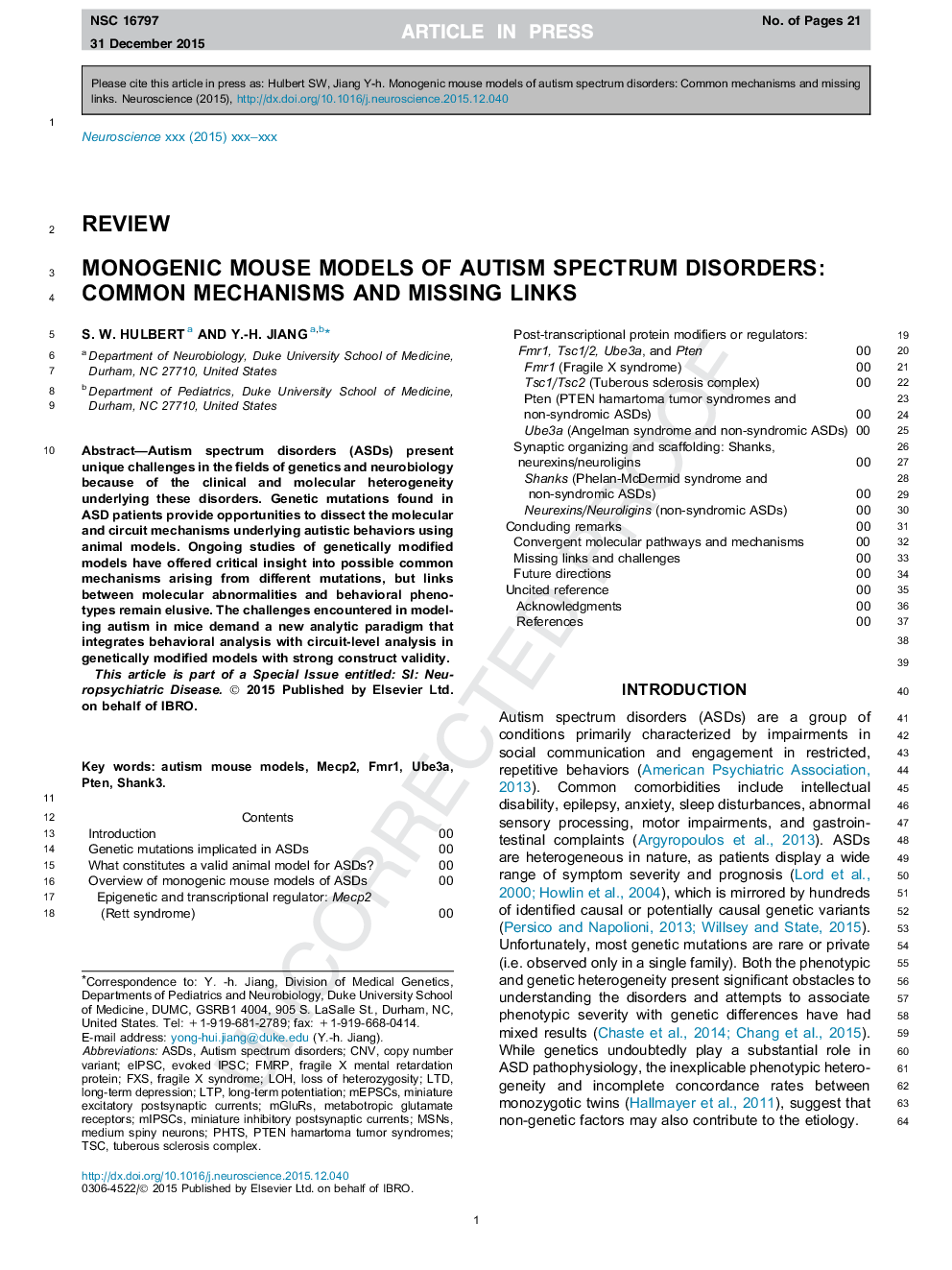| Article ID | Journal | Published Year | Pages | File Type |
|---|---|---|---|---|
| 6271151 | Neuroscience | 2016 | 21 Pages |
Abstract
Autism spectrum disorders (ASDs) present unique challenges in the fields of genetics and neurobiology because of the clinical and molecular heterogeneity underlying these disorders. Genetic mutations found in ASD patients provide opportunities to dissect the molecular and circuit mechanisms underlying autistic behaviors using animal models. Ongoing studies of genetically modified models have offered critical insight into possible common mechanisms arising from different mutations, but links between molecular abnormalities and behavioral phenotypes remain elusive. The challenges encountered in modeling autism in mice demand a new analytic paradigm that integrates behavioral assessment with circuit-level analysis in genetically modified models with strong construct validity.
Keywords
eIPSCmGluRsmEPSCsmIPSCsFXSFMRPMecp2Fmr1MSNsPHTSTSCUBE3ACNVASDsautism spectrum disordersloss of heterozygositylong-term depressionlong-term potentiationLTPminiature inhibitory postsynaptic currentsminiature excitatory postsynaptic currentsfragile X syndromeShank3LOHLTDCopy number variantmedium spiny neuronsfragile X mental retardation proteinPtenTuberous sclerosis complexMetabotropic glutamate receptors
Related Topics
Life Sciences
Neuroscience
Neuroscience (General)
Authors
S.W. Hulbert, Y.-H. Jiang,
